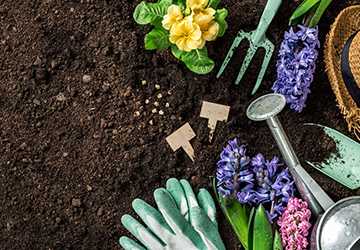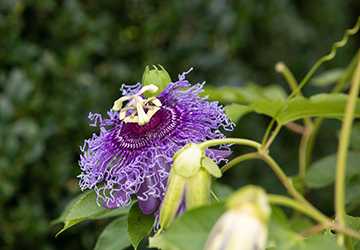Hey there, fellow plant lover! If you're anything like me, you want your garden to look stunning no matter the season. It's not just about having a splash of colour in the spring or a bountiful harvest in the summer. A lovely garden captivates year-round. So, grab your gloves, and let's dive into some simple yet effective seasonal gardening tips to keep your outdoor space vibrant every season.
1. Know Your Soil, Know Your Plants
First things first, let's talk soil. A fertile and nutrient-rich soil substrate forms the quintessential foundation for the triumph of any horticultural endeavour. Before planting anything, get to know your soil type. Is it sandy, clayey, or loamy? Different plants thrive in different soils. For instance, consider drought-resistant plants like lavender or sedum if you've got sandy soil. On the other hand, clayey soil? Go for plants like daylilies or asters that can handle more moisture.

Also, remember to feed your soil. Compost is an invaluable ally to horticulturists, augmenting soil fertility, enhancing its structural composition, and furnishing indispensable nutrients to facilitate optimal plant growth. Start a compost pile or bin in your backyard, and you'll have a steady supply of 'black gold' to nourish your garden.
2. Embrace the Power of Mulch
Mulch surpasses its role as a purely ornamental element in your garden (although it also excels in that domain!). It is a paradigm-shifting agent in preserving soil moisture, suppressing weed proliferation, and modulating soil temperature.
As seasons change, consider refreshing your mulch layer. In the colder months, a thick layer of mulch can protect plant roots from freezing temperatures. Come spring, a fresh layer can help retain moisture and keep weeds at bay.
When deliberating upon mulch choices, elect organic alternatives of an arboreal nature, like lignocellulosic wood chips, photogenic straw, or intricately fragmented foliage. These break down over time, adding valuable organic matter to the soil.
3. Plan for Continuous Bloom
Planning for continuous bloom is one of the secrets to a beautiful year-round garden. Research and choose plants that flower at different times of the year. Start with early bloomers like crocuses and daffodils in the spring. As summer rolls in, let your garden dazzle with roses, lilies, and dahlias. And remember the fall! Plants like asters, mums, and goldenrods can add colour to your garden as temperatures drop.
Also, consider incorporating evergreen plants into your garden design. They provide structure and colour throughout the year, ensuring your garden remains lively even in the depths of winter.
4. Stay on Top of Maintenance
A beautiful garden doesn't maintain itself. Regular upkeep ensures your plants stay healthy and your garden looks its best. Keep an eye out for pests and diseases. Identifying and addressing concerns early can avert the escalation of minor issues into significant problems.
Regular watering is essential, especially during dry spells. Invest in a high-quality watering can or hose and water your plants deeply but less frequently to promote extensive root development. And remember to deadhead! Removing flowers can tidy up your garden and allow plants to bloom more.
5. Embrace Change and Adapt
Embracing change and adaptability is a fundamental principle in gardening that resonates with the dynamic nature of the natural world. Every garden, regardless of its size or style, is subject to the ever-changing forces of nature, from shifting seasons and fluctuating weather patterns to evolving plant growth and development. As gardeners, we cultivate and nurture our plants and adapt and respond to the inevitable changes.
It involves continually assessing and adjusting our gardening practices, experimenting with new techniques, and exploring innovative approaches to sustainable and resilient garden design. By embracing change and adaptability, we enhance the health and vitality of our gardens and foster a deeper connection to the natural world, cultivating a sense of harmony, balance, and appreciation for the intricate rhythms and cycles of life that unfold in our outdoor spaces.
6. Incorporate Native Plants
Indigenous flora naturally exists in a specific area and has acclimated to the local climate and soil characteristics. Incorporating native plants into your garden offers numerous benefits. They often require less maintenance, as they're already well-suited to local conditions and provide essential habitat for wildlife such as butterflies and birds.
7. Cultivate Microenvironments
Understanding the subtle microenvironments dispersed throughout your garden can profoundly influence plant selection and strategic placement decisions.

Microclimates denote diminutive zones within your garden manifesting slightly divergent environmental conditions, encompassing temperature, sunlight exposure, and moisture levels, in contrast to the surrounding milieu.
8. Integrate Edible Landscaping
Why not combine beauty with functionality by incorporating edible plants into your landscape? Edible landscaping blends ornamental plants with edible crops, creating a visually appealing and productive garden space. Contemplate integrating fruit trees, berry bushes, or culinary herbs into your garden alongside conventional ornamental plants.
9. Practice Sustainable Gardening Techniques
Using sustainable gardening techniques can reduce your garden's environmental effects while increasing its resilience and health. Integrate methods such as composting, collecting rainwater, and employing organic pest control strategies to establish a more eco-friendly garden ecosystem.
10. Engage with Your Garden
Last but certainly not least, engage with your garden personally. Take the time to observe, nurture, and enjoy the beauty and tranquillity it provides. Regularly walk through your garden, appreciating the seasonal changes, fragrances, and textures.
Enhance your connection with nature by engaging in mindfulness or meditation within your garden, cultivating a more profound sense of well-being and a stronger bond with the environment sense of well-being and connection to the natural world.
Conclusion
Creating a beautiful year-round garden is a rewarding endeavour requiring some planning, patience, and passion. By understanding your soil, using mulch wisely, planning for continuous bloom, staying on top of maintenance, and embracing change, you'll be well on your way to enjoying a garden that delights the senses in every season. Happy gardening!


